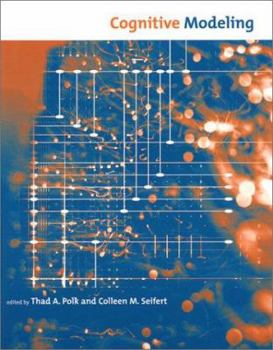< Back to Search Results
Cognitive Modeling
Select Format
Select Condition 
Book Overview
Computational modeling plays a central role in cognitive science. This book provides a comprehensive introduction to computational models of human cognition. It covers major approaches and architectures, both neural network and symbolic; major theoretical issues; and specific computational models of a variety of cognitive processes, ranging from low-level (e.g., attention and memory) to higher-level (e.g., language and reasoning). The articles included in the book provide original descriptions of developments in the field. The emphasis is on implemented computational models rather than on mathematical or nonformal approaches, and on modeling empirical data from human subjects.
Format:Paperback
Language:English
ISBN:0262661160
ISBN13:9780262661164
Release Date:August 2002
Publisher:Bradford Book
Length:1292 Pages
Weight:0.30 lbs.
Dimensions:2.0" x 7.1" x 9.0"
Age Range:18 years and up
Grade Range:Postsecondary and higher
Customer Reviews
2 ratings
An interesting and helpful collection of articles
Published by Thriftbooks.com User , 20 years ago
This book could be considered to be a collection of articles on the `computational theory of mind.' Although the articles are somewhat out of date, due to the advances in neuroscience and cognitive science that have occurred since the time of publication of the book, it does serve as a good motivation for the understanding of more recent developments. I did not read all of the articles in the book, and so my review will be confined to the ones that I did. The article on ACT in chapter 2 is basically a theory of cognition that is based on recursion. Referring to ACT as a "simple theory of complex cognition", John Anderson, the author of the article, wants to simulate the manner in which humans develop recursive programs. The machine that is to simulate this makes use of `production rules,' in its knowledge base, which the author claims is exhaustive enough to produce complex cognition. To produce true machine intelligence, all one has to do is to tune these production rules and make use of them as needed. As the author describes it, the original ACT theory was based on human associative memory, but the one described in this article is called ACT-R, and can simulate adaptive behavior in the presence of a noisy environment. The author describes various simulations using ACT-R, and concludes that it is sensitive to prior information and to information about what is appropriate response to the situation it finds itself in. The author stresses more than once the simplicity of the ACT-R system: it is able to encode data from the environment as declarative knowledge, encode the changes in the environment as procedural knowledge, and encode the statistics of this knowledge use in the environment. Another highly interesting article is the one by Alan Prince and Paul Smolensky on the application of optimization theory to linguistics. Called `optimality theory' by the authors in their extensive research on the topic, in the article they discuss the relations between optimality in grammar and optimization in neural networks. The authors discuss with great clarity the role that constraints play in the construction of linguistic structures, and the fact that these constraints typically conflict with each other. This conflict between grammatical constraints must thus be managed by a successful grammatical architecture. Optimality theory asserts that these constraints are universal in the sense that they are present in every language. The connection of optimality theory with neural networks arises when one is interested in finding out if the properties of optimality theory can be explained in terms of fundamental principles of cognition. The computational theory of neural networks the authors believe holds some clues on these properties. In order to make the connection with grammatical issues, as abstract as they are, and because neural networks are highly nonlinear dynamical systems, one must find a way of encapsulating the complicated behavior of neural ne
Good as an Introduction or Reference Book
Published by Thriftbooks.com User , 22 years ago
This book presents the current and mor well-known models of cognition in the area cognitive science. This includes descriptions of both symbolic and connectionist models (e.g. ACT-R, SOAR, ART-MAP, MAC/FAC, etc.), written by the authors who developed them. However, each chapter presents a somewhat condensed version of each model, so some (but not all) of the technical details are ommitted. Overall, the book can function as an extensive introduction to contemporary methods and issues in cognitive modelling, or as a reference book for those more familiar with the field.






